We’re here to make sense of Indian traditions in a way that feels simple and real. Hopefully, you’ll find answers to questions you’ve wondered about—but maybe never said out loud.
UMeDesi.com
India is a diverse subcontinent with a lot of regional cultures, languages and traditions.
While January 1st is also celebrated as the New Year’s day along with the rest of the world, there are a lot of different New year celebrations in different parts of the country based on several traditions – mostly to do with the arrival of spring.
The dates are different as are the traditions and names and how they are celebrated. So take a look at all the different New Years’ celebrations from India and nearby regions.
Below is a collection of some of these New Year celebrations and where they are celebrated.
Ugadi | Yugadi | Gudi Padwa |Baisakhi
Vishu |Pohela Boishakh | Puthandu | Bihu
Other New year festivals in SE Asia:
Songkran | Thingyan |Chaul Chnam Thmey| Pi Mai
Ugadi
Ugadi is a popular festival celebrated in the South Indian states of Andhra Pradesh, Telangana and Karnataka.
The word “Ugadi” is derived from two Sanskrit words “Yuga” meaning era or age, and “Adi” meaning beginning.
Ugadi marks the beginning of a new era or a new year, and it is celebrated with great enthusiasm and fervor.
The word “Ugadi” is derived from two Sanskrit words “Yuga” meaning era or age, and “Adi” meaning beginning.
When is Ugadi?
Ugadi is celebrated on the first day of the Hindu lunar calendar month of Chaitra (March-April), which marks the beginning of the New Year according to the Hindu calendar.
So the date depends on a different cycle and can fall on different dates in the calendar. There is a resource which has the dates of ALL the holidays around n the world and the current dates.
Click here to find the date for this years Ugadi.
Click here to find out the dates for all the festivals and holidays in India.
How is Ugadi celebrated?
On this day, people wake up early in the morning, take a bath, and decorate their houses with mango leaves and rangolis.
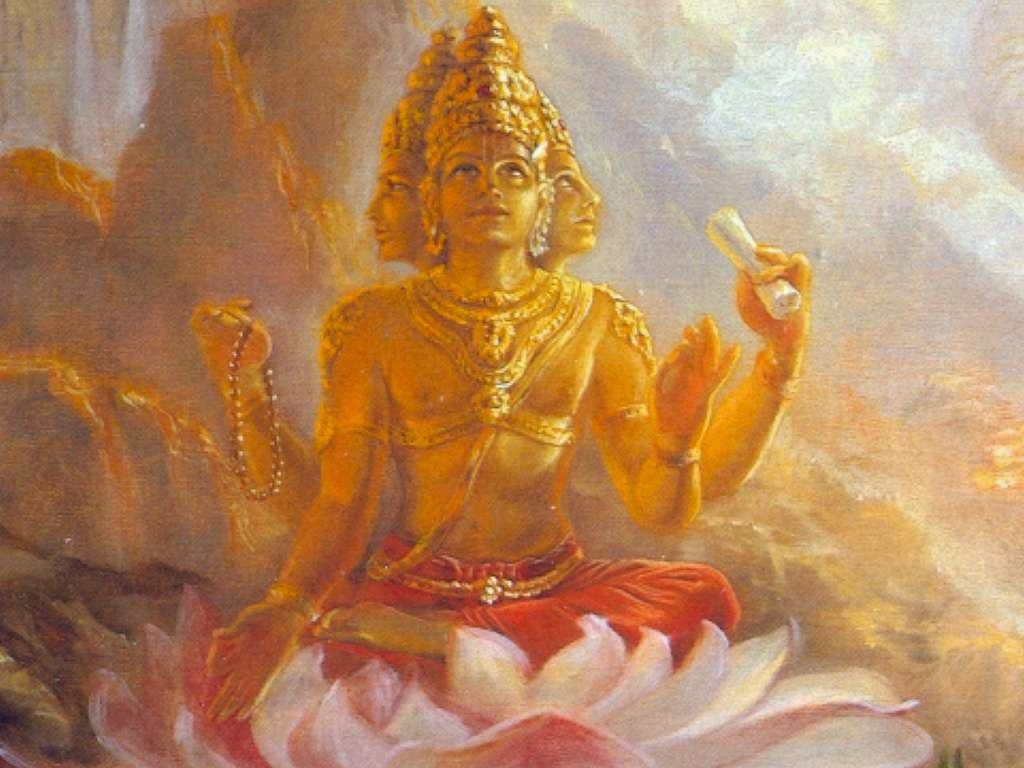
It is believed that Lord Brahma, the Hindu god of creation, started the creation of the universe on this day.They also offer prayers to Lord Brahma, and seek his blessings for a happy and prosperous new year.
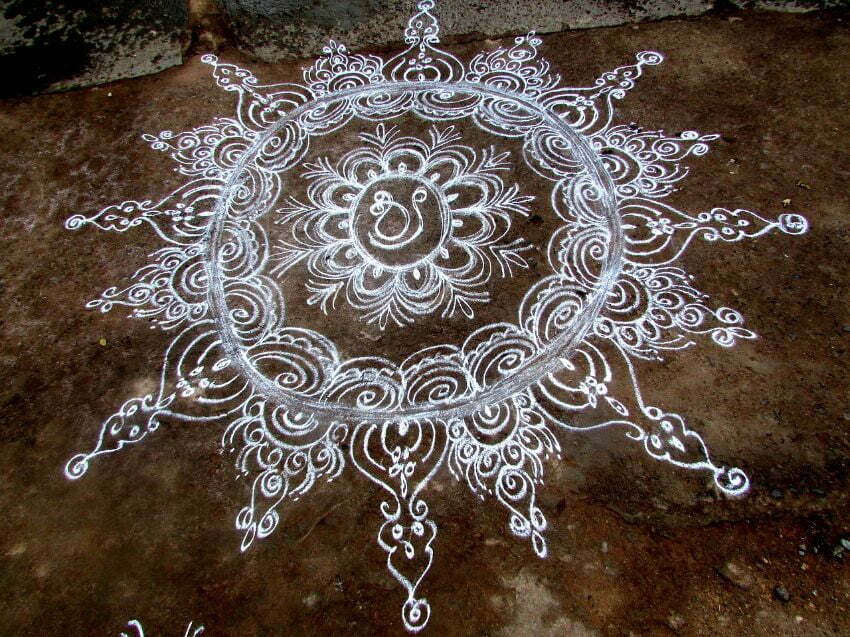

People prepare special dishes like Ugadi pachadi (a mixture of six different tastes -to remind us of the qualities of LIFE itself – sweet, sour, salty, bitter, spicy, and tangy), pulihora (tamarind rice), bobbatlu (sweet stuffed bread), and other traditional delicacies.


People also exchange gifts and sweets with each other and visit temples to offer their prayers.
The significance of Ugadi festival is both religious and cultural.
It marks the beginning of a new year and is considered an auspicious day to start new ventures and make important decisions.
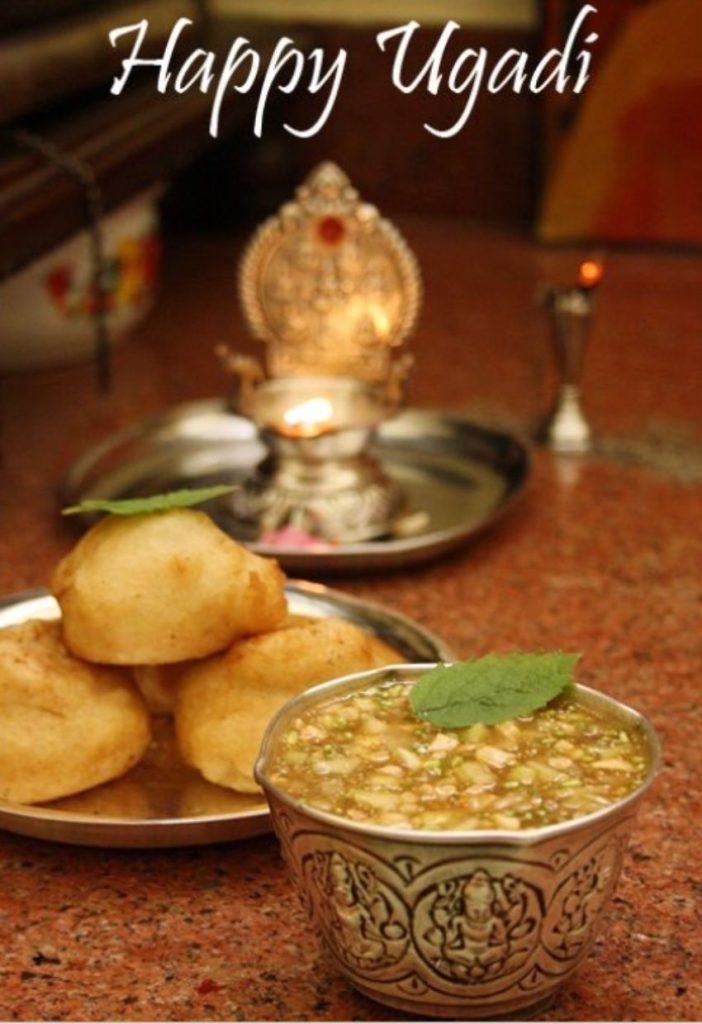
It also signifies the onset of spring and the harvest season, and people pray for a good crop and prosperity. On the religious front, the festival marks the beginning of the Vasant ritu (spring season) and is considered an auspicious time to start new ventures, such as business, education, and marriage.
Yugadi
In Karnataka, Ugadi is also known as “Yugadi” and it holds great significance in the state’s cultural and traditional heritage. On this day, people clean their houses and decorate them with fresh flowers and mango leaves, which are considered auspicious.

In some parts of Karnataka, people also perform the ritual of “Panchanga Shravana” where they listen to the predictions for the upcoming year according to the Hindu lunar calendar. The predictions are based on astrological calculations and are believed to give an insight into the future.
Panchangam is an astrological almanac used in South India to calculate auspicious timings and events according to the Hindu lunar calendar. (In the north it’s called Panchang)
Panchangam is closely related to the study of astronomical positions of stars, constellations, and planets. It is based on the positions of the moon and other planets in the solar system, as well as the 27 constellations or Nakshatras that the moon travels through during its revolution cycle around the earth.
The calculation of the Tithi, Nakshatra, Yoga, Karana, and Var (Panchangam means five limbs in Sanskrit) are all based on the positions of the moon, sun, and other celestial bodies in the solar system.
Read More about Panchangam
Let’s take a look at the five parts of the Panchangam in more detail:Tithi – A Tithi is a lunar day, which is calculated based on the position of the moon in relation to the sun. There are 30 Tithis in a lunar month, each lasting for approximately 24 hours. The Tithi is used to determine auspicious and inauspicious timings for various events, such as weddings, business deals, and other important activities.
Nakshatra – The Nakshatras are the 27 constellations that the moon travels through during its cycle. Each Nakshatra is associated with a specific set of characteristics and is believed to have a particular impact on human life. The Nakshatra is used to determine the most auspicious time for starting a new venture or undertaking a new project.
Yoga – The Yoga is the combination of the positions of the sun and the moon, and it is used to determine the auspicious and inauspicious timings for various activities, such as traveling, starting a new job, or buying a new home.
Karana – The Karana is a half Tithi, which is used to determine the most auspicious time for certain activities, such as cutting hair, trimming nails, and other personal grooming activities.
Var – The Var refers to the day of the week and is used to determine the auspicious and inauspicious timings for various activities, such as starting a new business, getting married, or signing a new contract.
The Panchangam is used by astrologers, priests, and individuals to determine the most auspicious timings for various activities and events in their lives. For example, if someone is planning to start a new business, they may consult the Panchangam to determine the most auspicious date and time for launching their venture.
It takes into account the day, time, and location to create a personalized calendar for a specific region or individual.
Another popular tradition on Ugadi in Karnataka is the “Huli Vesha” or the Tiger Dance, where people dress up in tiger costumes and dance to the beats of drums and other musical instruments.

The dance is believed to bring prosperity and good luck to the community.
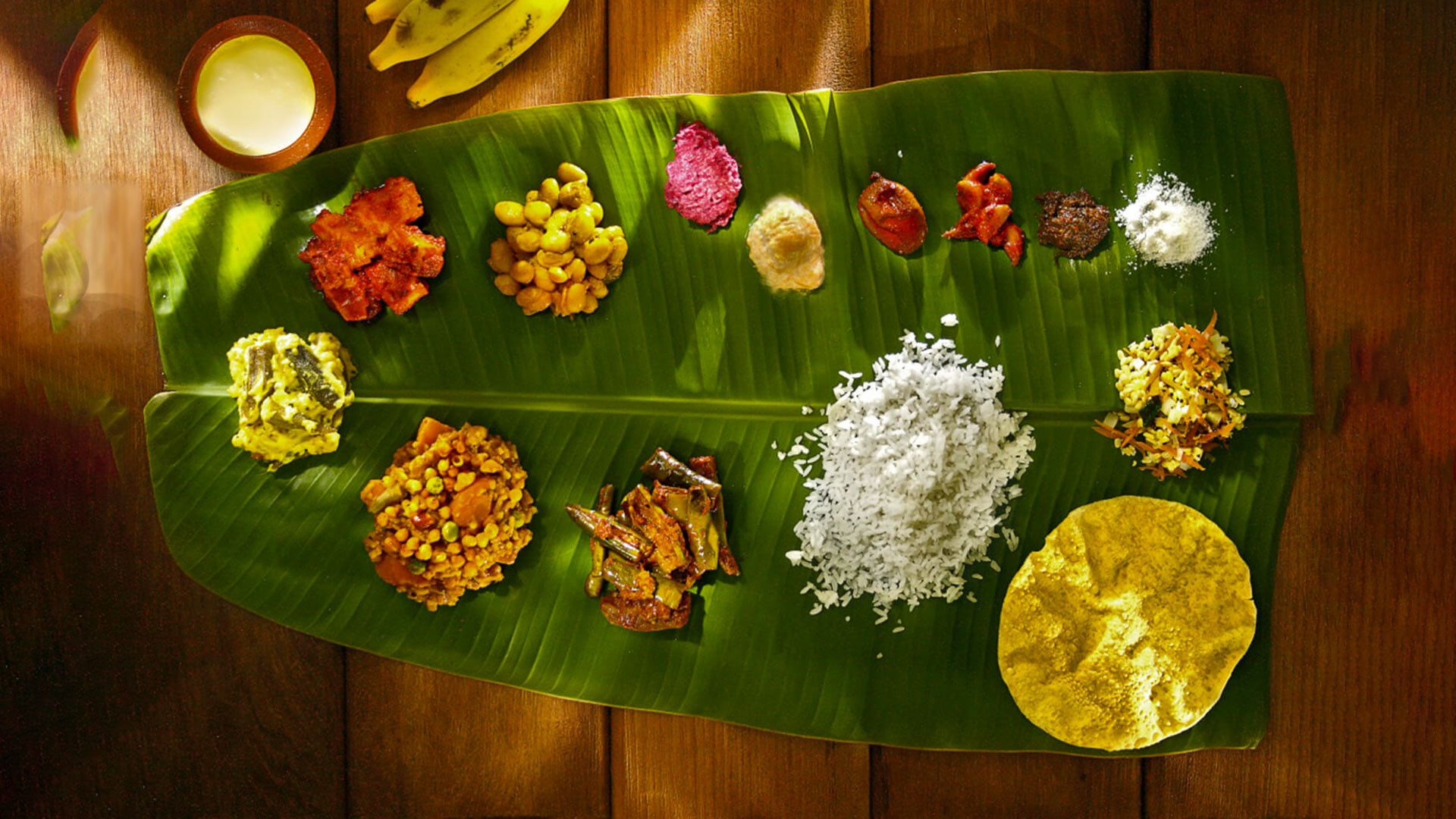
In Karnataka it’s celebrated on the same day as in Andhra Pradesh and Telangana.
Gudi Padwa
This festival is celebrated in the western state of Maharashtra and marks the beginning of the Marathi new year. It falls in the month of March or April.
Gudi Padwa, also known as Samvatsar Padvo, is a springtime festival that marks the New Year for the people of Maharashtra, Goa, and parts of Karnataka and Andhra Pradesh in India. It is celebrated on the first day of the Chaitra month of the Hindu calendar, which typically falls in March or April.
Gudi Padwa is celebrated with great enthusiasm and is considered one of the most auspicious days in the Hindu calendar. The festival is associated with the harvest season and the arrival of spring, which symbolizes new beginnings and the renewal of life.
On this day, people clean their homes, decorate them with rangolis and flowers, and prepare special dishes.
One of the main traditions of Gudi Padwa is the preparation of the Gudi, a bamboo stick decorated with a silk cloth, flowers, and a garland, and topped with an upturned copper or silver vessel. The Gudi is then hoisted at the entrance of homes, symbolizing victory and prosperity.
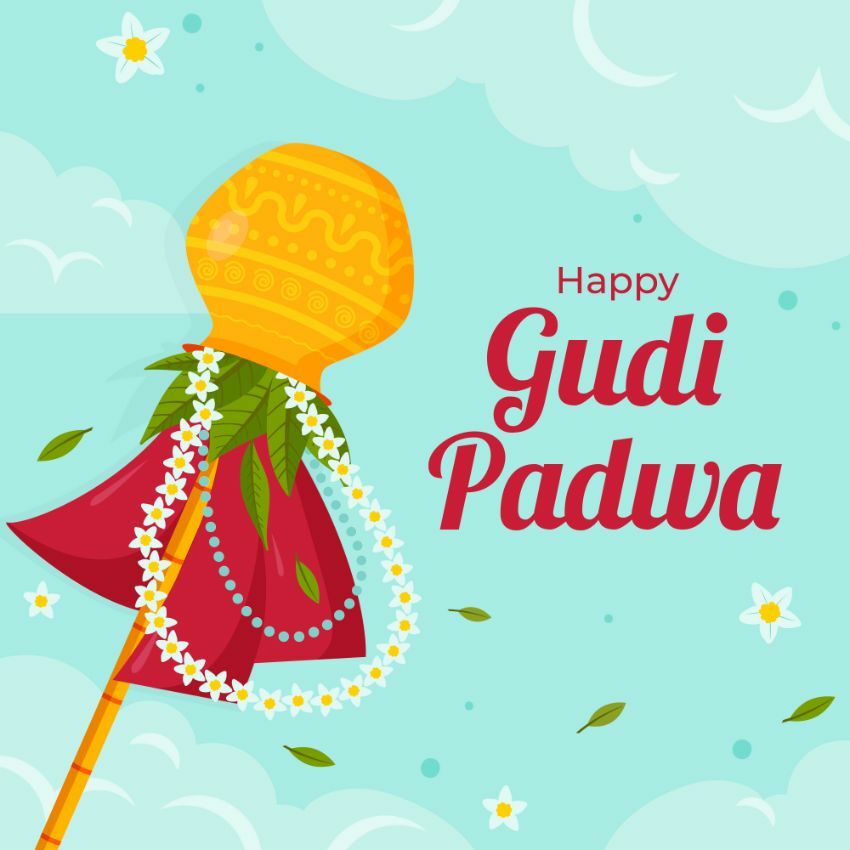
In addition to these traditions, Gudi Padwa is also marked by various cultural events and performances. In Maharashtra, people participate in the traditional dance form of Lavani, while in Goa, people perform the folk dance of Fugdi. The festival also sees the participation of musicians, who perform traditional music, and theater artists, who stage plays and dramas.
Click here to find the date for this year.
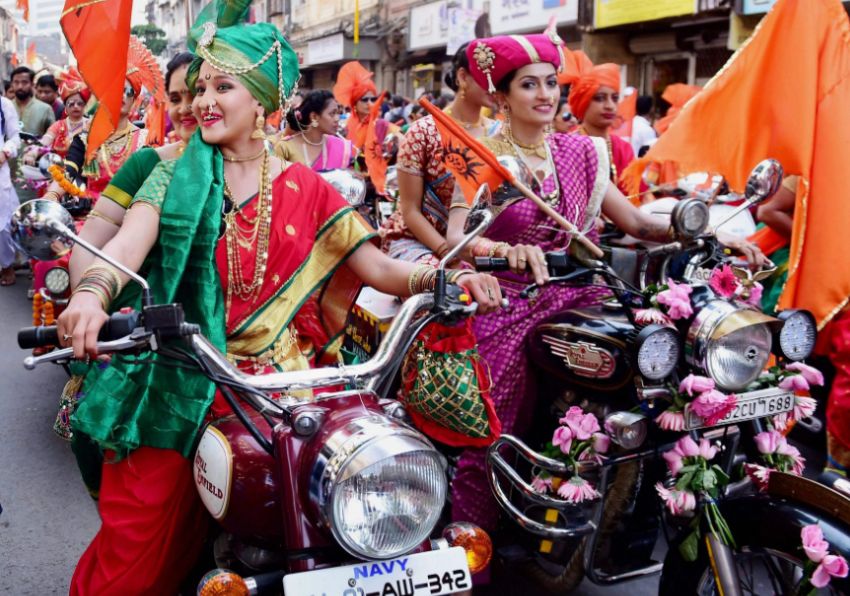
In Maharashtra, people take out processions carrying the Gudi, which is decorated with a silk cloth, flowers, and a garland, and topped with an upturned copper or silver vessel. The procession is led by a group of drummers and dancers, and people dress up in traditional clothes and participate in the revelry.
During the procession, the Gudi is carried to the local temple, where it is offered to the deity as a symbol of victory and prosperity. The procession also passes through the streets, and people offer prayers and distribute sweets and other delicacies to their neighbors and friends.
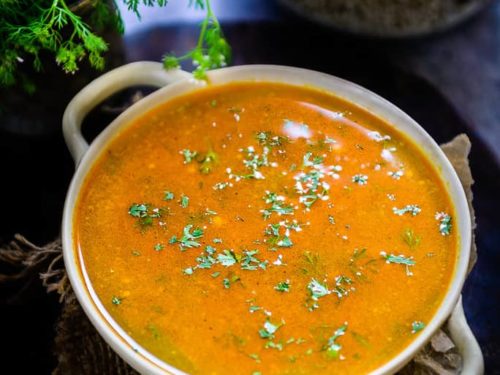

People decorate their homes with colorful rangolis, raise a Gudi flag.
Some of the special dishes made during Gudi Padwa include:
- Puran Poli: A sweet flatbread stuffed with a mixture of lentils, jaggery, and cardamom powder. It is usually served with ghee. (same as bobbatlu served in Andhra pradesh for Ugadi above)
- Shrikhand: A sweet dish made with strained yogurt, sugar, and flavored with cardamom powder and saffron.
- Aamti: A spicy dal dish made with toor dal, kokum, jaggery, and a blend of Maharashtrian spices.
- Kothimbir Vadi: A savory snack made with besan (gram flour), coriander leaves, and spices. It is steamed and then fried.
- Sabudana Khichdi: A popular Maharashtrian breakfast dish made with tapioca pearls, peanuts, and spices.
- Kanda Poha: A classic breakfast dish made with flattened rice, onions, and a blend of spices.
- Batata Bhaji: A simple and tasty potato dish that is flavored with cumin seeds, mustard seeds, and curry leaves.
These dishes are usually served with rice, chapatis, or puris. Gudi Padwa is a time for families and friends to come together and enjoy traditional Maharashtrian food, which is an integral part of the celebrations.
Baisakhi
Baisakhi is a harvest festival that is celebrated mainly in the northern Indian state of Punjab and also by Sikh communities around the world. It falls on the first day of the month of Vaisakh in the traditional Indian solar calendar, which usually falls on April 13th or 14th.
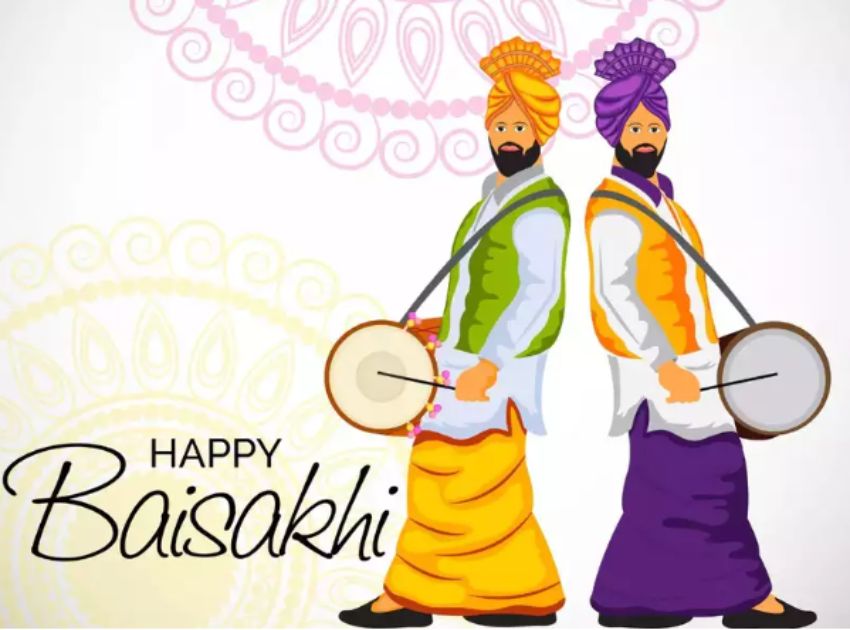
Baisakhi has both religious and cultural significance for Sikhs. It marks the anniversary of the formation of the Khalsa Panth, a community of devout Sikhs, by the tenth Sikh Guru, Guru Gobind Singh, in 1699. It is also a celebration of the spring harvest, when farmers offer thanks to God for the bountiful crop and pray for a good crop in the future.
The celebrations typically begin with early morning processions called Nagar Kirtans, in which devotees walk through the streets singing hymns and carrying the Sikh holy book, the Guru Granth Sahib. The processions are led by five Sikhs, called the Panj Pyare, dressed in traditional attire, who carry the Sikh flag, known as the Nishan Sahib.
After the Nagar Kirtan, a special prayer meeting is held at the gurdwara, the Sikh place of worship, where the Guru Granth Sahib is read and hymns are sung. This is followed by a community meal called langar, in which everyone, regardless of caste, creed or religion, is served food as a symbol of equality and communal harmony.
The festivities also include music and dance performances, martial arts demonstrations, and traditional sports such as wrestling and Kabaddi. Many people also decorate their homes with flowers and participate in traditional games and activities.
People visit gurudwaras, perform Bhangra dance, and enjoy traditional Punjabi food like sarson ka saag and makki di roti.

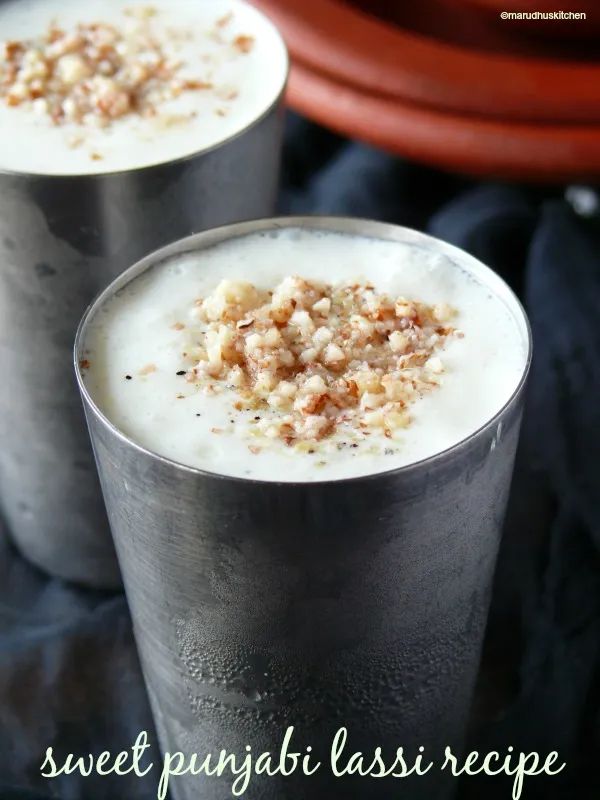
Here are some traditional dishes that are commonly prepared to celebrate Baisakhi:
- Sarson Ka Saag and Makki Ki Roti: This is a popular dish in Punjab, made with mustard greens and cornmeal flatbread. It is a staple dish during the winter season and is commonly eaten during Baisakhi.
- Chole Bhature: This is a popular dish made with spicy chickpeas and fried bread called Bhature. It is a favorite dish among Punjabis and is often served at Baisakhi fairs.
- Paneer Tikka: Paneer Tikka is a popular appetizer made with marinated cottage cheese, vegetables, and spices. It is often served as a snack during Baisakhi celebrations.
- Kulfi: Kulfi is a popular frozen dessert made with condensed milk, cream, and flavors like pistachio or saffron. It is a traditional dessert served during Baisakhi.
- Lassi: Lassi is a refreshing drink made with yogurt, water, and sugar. It is a popular drink in Punjab and is often served during Baisakhi.
Click here to see date for this year.
Vishu
Vishu is a Hindu festival that is primarily celebrated in the southern Indian state of Kerala, as well as in some other parts of the country. It usually falls on or around April 14th each year and marks the beginning of the Malayalam New Year. The festival is also known as Malayalam New Year or Kerala New Year.
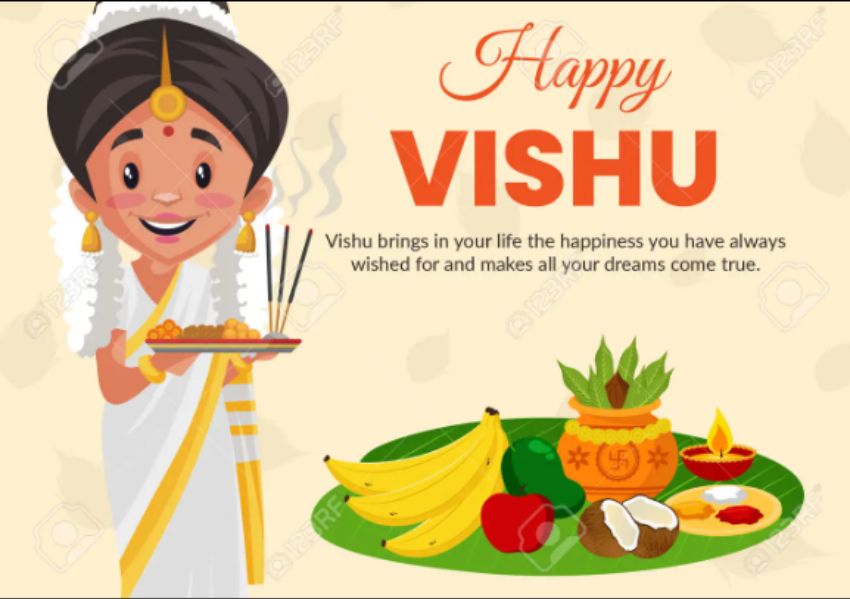
Vishu is a festival that is rich in cultural and religious significance. One of the most important rituals of Vishu is the Vishukkani, which means “the first thing seen on Vishu morning”.
The Vishukkani is a special arrangement of auspicious items such as rice, betel leaves, flowers, fruits, and coins, all placed in a special vessel called Uruli. The Uruli is placed in front of a deity or a photograph of Lord Krishna, and is the first thing that people see upon waking up on Vishu morning. It is believed that seeing the Vishukkani brings good luck and prosperity for the year ahead.

Another important tradition of Vishu is the giving of Vishukkaineetam, which is a token amount of money given to family members, friends, and employees as a symbol of goodwill and prosperity.

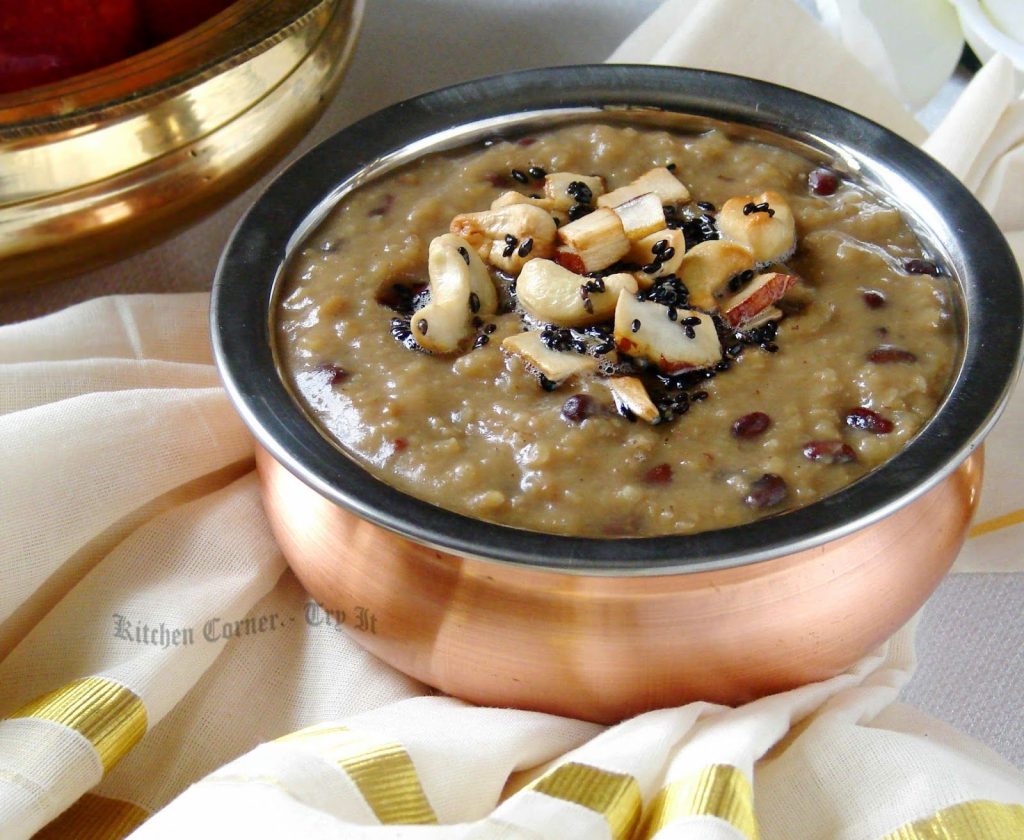
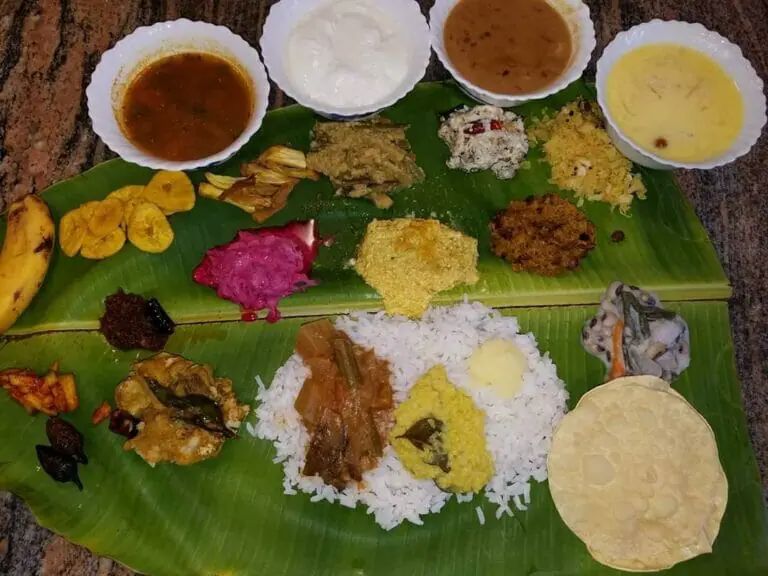
Here are some popular dishes that are prepared for Vishu:
- Vishu Kanji: This is a rice porridge made with coconut milk, spices, and vegetables like pumpkin or beans. It is a traditional dish that is usually served for breakfast on Vishu morning.
- Thoran: This is a dry vegetable dish made with grated coconut, green chilies, and spices. It is usually made with vegetables like beans, cabbage, or carrot.
- Vishu Sadya: This is a traditional vegetarian feast that is served on Vishu day. It typically includes a variety of dishes like sambar, rasam, avial, thoran, and payasam.
- Mango Pachadi: This is a sweet and sour mango chutney made with ripe mangoes, jaggery, and tamarind. It is often served as a side dish for the Vishu Sadya.
- Ada Pradhaman: This is a sweet rice pudding made with rice flakes, coconut milk, jaggery, and cardamom. It is a popular dessert served during the Vishu Sadya.
- Paal Payasam: This is a sweet milk pudding made with rice, milk, sugar, and cardamom. It is a popular dessert in Kerala and is often served during festivals.
Vishu marks the beginning of a new agricultural year and is considered to be an auspicious day for farmers to start cultivating their crops. It is also believed to be the day when Lord Vishnu incarnated as Lord Krishna, and therefore, it has great significance in the Hindu religion.
Pohela Boishakh
Pohela Boishakh is the Bengali New Year and is celebrated in the Indian state of West Bengal and the country of Bangladesh. The festival usually falls on April 14th or 15th every year, according to the Bengali calendar.
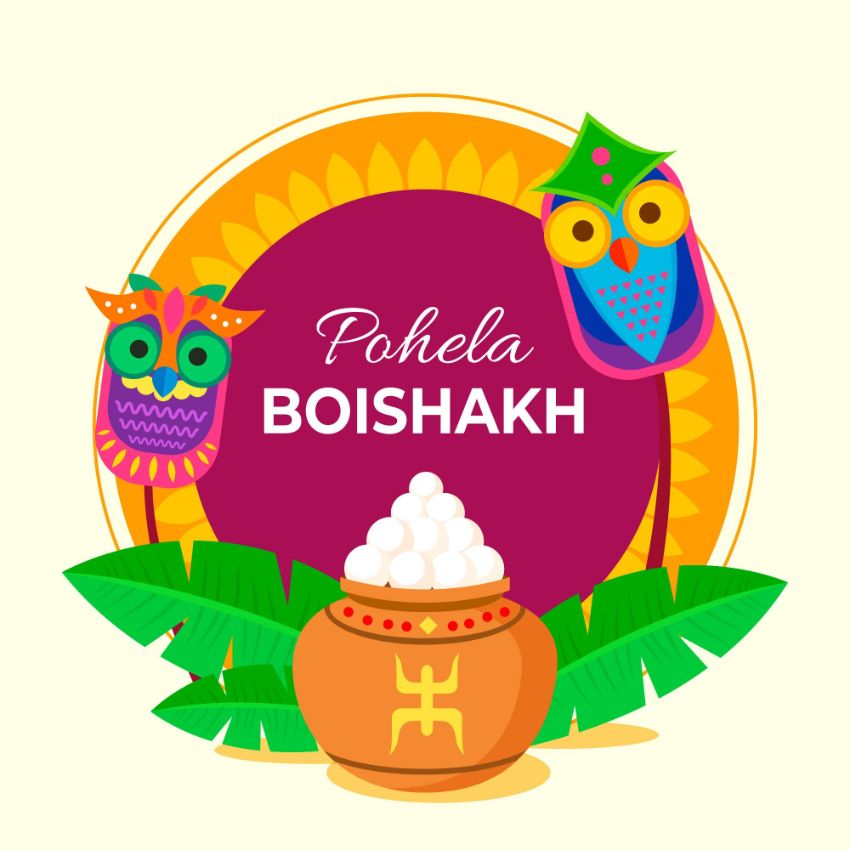
Pohela Boishakh is a time of joy, renewal, and hope. The celebration of the Bengali New Year begins with the cleaning of homes and the decoration of streets with colorful ribbons, balloons, and traditional motifs like alpana or rangoli. People wear new clothes and gather in large numbers to participate in various cultural programs and traditional activities.
One of the most important events of Pohela Boishakh is the procession or “Prabhat Pheri” which is led by musicians and dancers. People participate in this procession, singing traditional songs and dancing to the beats of the dhol and dhak (traditional drums).
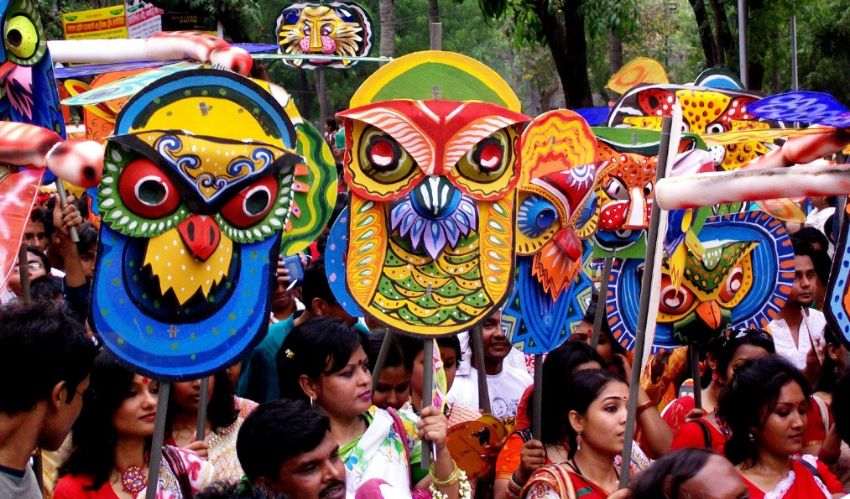
Another important tradition of Pohela Boishakh is the preparation of special dishes like Panta Bhat (a dish of leftover rice soaked in water), Ilish Bhaja (fried hilsa fish), and Chomchom (a popular sweet made with chhena or cottage cheese). These dishes are usually prepared and shared among family and friends to celebrate the occasion.
Many cultural programs and fairs are organized in West Bengal and Bangladesh during Pohela Boishakh. These programs feature traditional dance forms like Jatra, Baul, and Rabindra Sangeet. People also visit temples and offer prayers to seek blessings for the New Year.
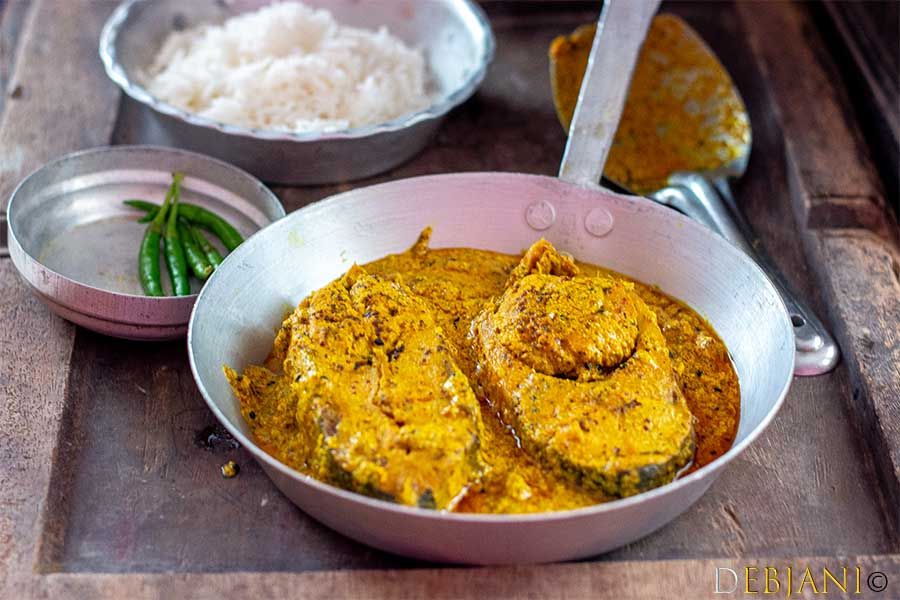
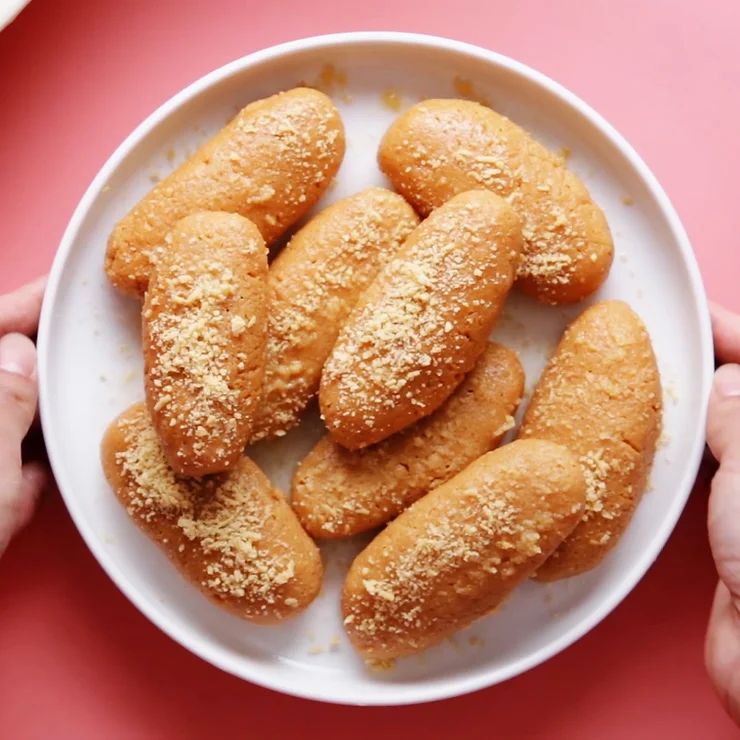
Here are some popular dishes that are made for Pohela Boishakh:
- Panta Bhat: This is a traditional Bengali dish made with leftover rice that is soaked overnight in water. It is typically served with fried fish, pickles, and green chilies.
- Ilish Bhaja: This is a popular Bengali dish made with fried hilsa fish. The fish is marinated with spices and then fried until crispy.
- Shorshe Ilish: This is another popular Bengali dish made with hilsa fish. The fish is cooked in a mustard sauce with green chilies and served with rice.
- Chomchom: This is a popular Bengali sweet made with chhena or cottage cheese, dipped in sugar syrup and flavored with cardamom.
- Mishti Doi: This is a sweetened yogurt dessert that is popular in West Bengal. It is made by boiling milk and then adding a culture of yogurt and sugar.
- Sandesh: This is another popular Bengali sweet made with chhena or cottage cheese, sugar, and flavored with cardamom or saffron.
- Luchi and Cholar Dal: This is a traditional Bengali breakfast dish made with deep-fried flatbread called Luchi and a spicy lentil curry called Cholar Dal.
Traditional Bengali sweets rasgulla and sandesh.


Puthandu
Puthandu, also known as Tamil New Year, is a festival celebrated by Tamilians in the Indian state of Tamil Nadu and in Sri Lanka. It falls on the first day of the Tamil month of Chithirai, which usually falls on April 14th in 2023 but it can vary since it’s based on a different calendar.
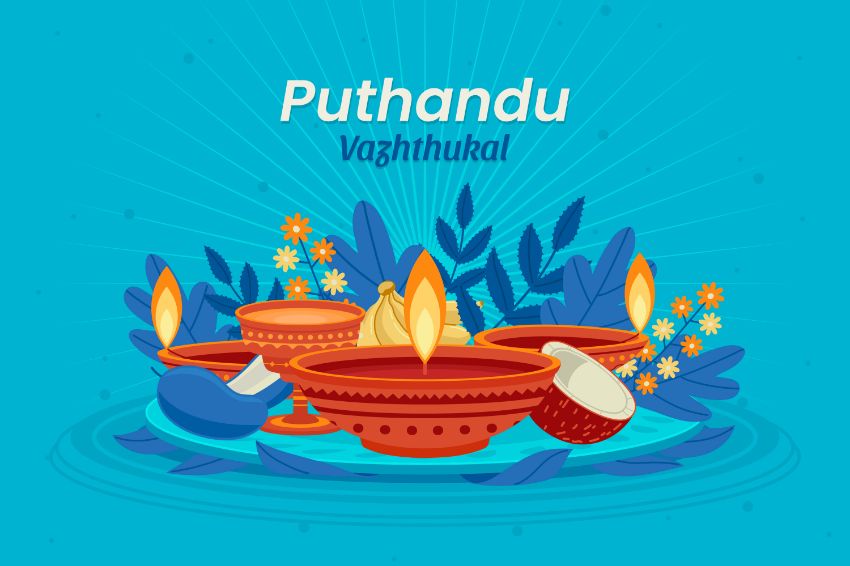
The celebration of Puthandu is associated with the spring season, which symbolizes new beginnings and the renewal of life. The festival is traditionally celebrated by decorating houses with flowers, drawing intricate kolams or rangolis at the entrance of houses, and preparing special dishes. People wear new clothes and offer prayers to the deities.
One of the main traditions of Puthandu is the preparation of the Pachadi, a dish made with neem flowers, jaggery, tamarind, mango, and other ingredients. The dish is said to symbolize the different flavors of life – sweet, sour, bitter, and tangy. The neem flowers represent bitterness, tamarind represents sourness, jaggery represents sweetness, and mango represents tanginess. Eating this dish on Puthandu is believed to symbolize the acceptance of all the flavors of life, including the bitter ones.

On Puthandu, people also exchange gifts, visit friends and family, and participate in cultural events like music and dance performances. In Tamil Nadu, people gather in large numbers to watch the traditional processions called “Chithirai Thiruvizha,” which features decorated elephants and chariots carrying the idols of deities.
Puthandu is also marked by various cultural events and performances. In Tamil Nadu, people participate in dance and music performances, including the classical dance form of Bharatanatyam. The festival also sees the participation of musicians, who perform traditional Carnatic music, and theater artists, who stage plays and dramas.

Puthandu, the Tamil New Year, is celebrated with traditional Tamil dishes that are typically vegetarian and rich in flavor. Some of the special dishes made during Puthandu include:
- Maanga Pachadi: A sweet and sour dish made with raw mango, jaggery, neem flowers, and other ingredients. It is usually served as part of a traditional Puthandu meal.
- Payasam: A sweet dessert made with milk, sugar, and a variety of ingredients such as vermicelli, rice, or lentils. It is flavored with cardamom, saffron, and nuts.
- Medu Vada: A savory snack made with urad dal (black gram), onions, and spices. It is usually served with coconut chutney and sambar.
- Sambar: A spicy lentil-based soup that is flavored with tamarind, vegetables, and a blend of South Indian spices. It is typically served with rice or idli.
- Rasam: A tangy soup made with tamarind, tomatoes, and a blend of spices. It is typically served as a side dish with rice.
- Paruppu Thogayal: A chutney made with roasted lentils, coconut, and spices. It is typically served with rice and ghee.
- Poriyal: A vegetable side dish made with chopped vegetables such as beans, carrots, or cabbage, and flavored with mustard seeds, urad dal, and curry leaves.
These dishes are typically served on banana leaves as part of a traditional Puthandu meal. Families and friends gather together to enjoy these special dishes, which are an integral part of the Puthandu celebrations.
Bihu
The state of Assam has the Assamese new year festival is known as Bihu, which is actually a set of three different festivals celebrated at different times of the year. Here’s a brief overview of each of the three Bihu festivals:
Rongali Bihu or Bohag Bihu
This is the most important of the three Bihu festivals and marks the beginning of the Assamese new year. It is celebrated in mid-April and coincides with the arrival of spring and the onset of the agricultural season.
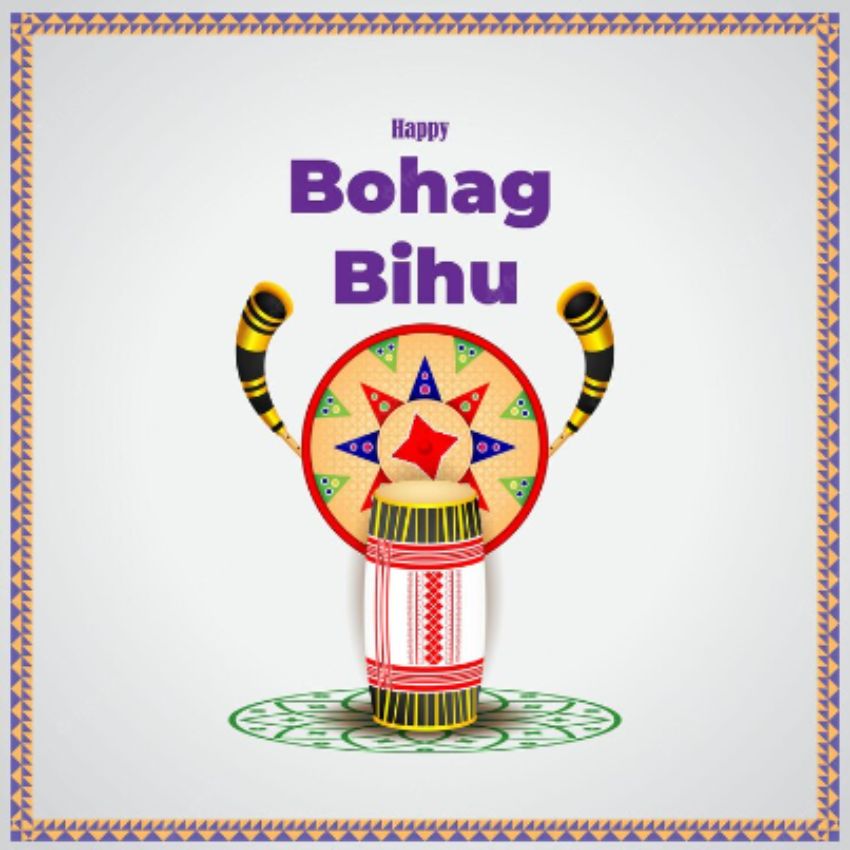

People prepare special dishes like pitha and larus, and perform traditional dances like the Bihu dance.
Rongali Bihu is a time for people to celebrate their cultural heritage and express their gratitude to nature for its bounty.
Kati Bihu or Kongali Bihu: This festival is celebrated in mid-October and is also known as the “festival of the poor”. It is a time when the fields are barren and people pray for a good harvest. People light lamps in their homes and offer prayers to the Tulsi plant. Kati Bihu is a time for people to reflect on their blessings and appreciate the simple pleasures of life.
Bhogali Bihu or Magh Bihu: This festival is celebrated in mid-January and marks the end of the harvest season. People build bonfires and prepare traditional Assamese delicacies like pitha, laru, and fish. It is a time for people to come together and celebrate the fruits of their labor.
The new year festivals mentioned above are specific to the cultural and religious traditions of India.
Sojibu Nongma Panba
Sojibu Nongma Panba is a traditional festival of Manipur, a northeastern state of India. It is celebrated on the 14th day of the lunar month of Langban (February/March) by the Meitei community of Manipur. The festival marks the beginning of the agricultural season and is dedicated to the goddess Sojibu, the deity of paddy fields and crops.
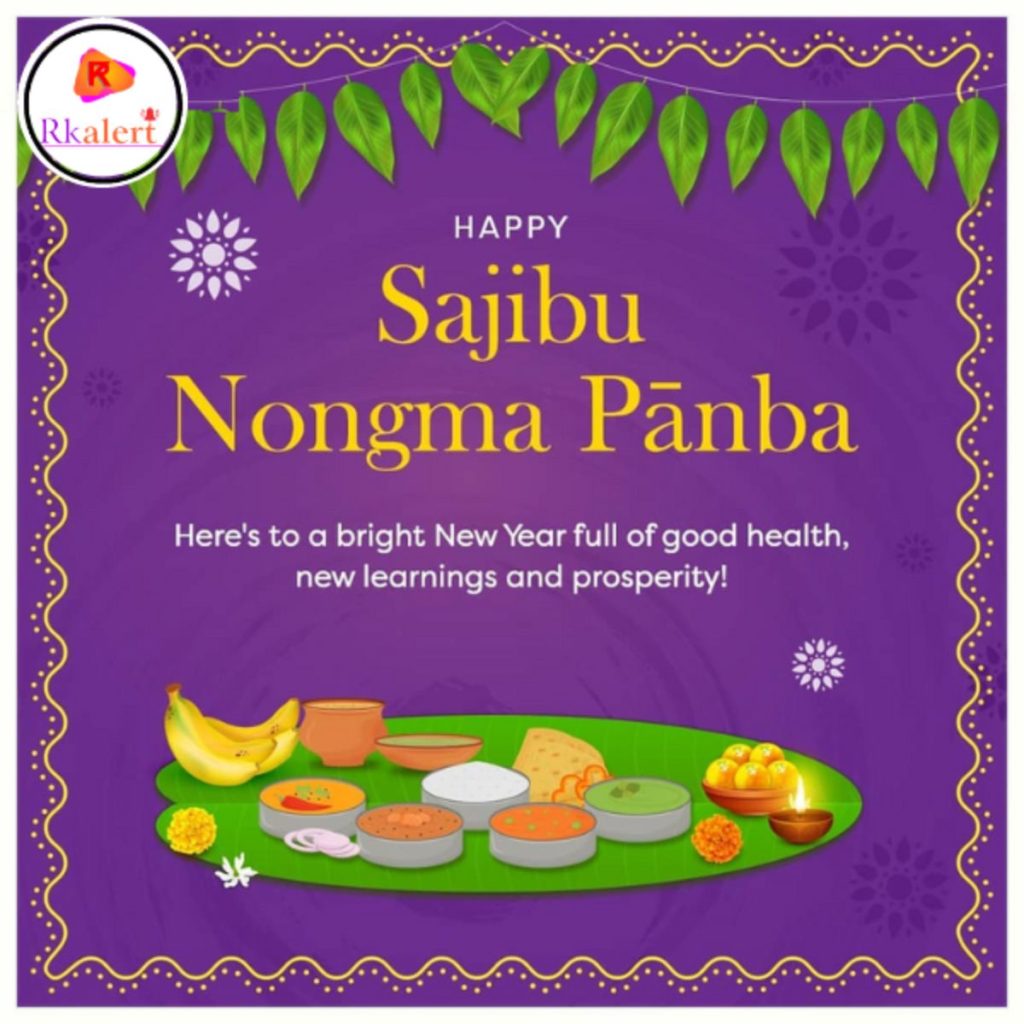
The term Sojibu Nongma Panba can be broken down as follows: ‘Sojibu’ means the area where the goddess Sojibu resides, ‘Nongma’ means the first, and ‘Panba’ means cultivation or ploughing of the fields. Hence, the festival is also known as the ‘First Ploughing Festival’.
The festival begins with the preparation of the soil for cultivation, followed by the ceremonial ploughing of the fields by the head of the family or the eldest member of the community.
This is considered an auspicious event, and it is believed that the success of the upcoming agricultural season depends on the ploughing.
After the ploughing ceremony, offerings of fruits, flowers, and other items are made to the goddess Sojibu. The people then visit the nearby temple of Sojibu to seek blessings and offer prayers for a bountiful harvest.
The festival is also marked by cultural events such as traditional dances, songs, and feasting.
Sojibu Nongma Panba has a significant spiritual and cultural significance for the Meitei community of Manipur. The festival signifies the beginning of the agricultural season, and it is believed that a good harvest is necessary for the prosperity and well-being of the community.
The festival is also an occasion to celebrate the bond between humans and nature and to offer gratitude to the goddess Sojibu for providing them with sustenance.
Overall, Sojibu Nongma Panba is a unique festival that is a testament to the close relationship between the Meitei community and their environment.
Sojibu Nongma Panba is primarily an agricultural festival, and the traditional foods prepared during the festival are made from the newly harvested crops. Some of the popular traditional foods prepared during the festival include:
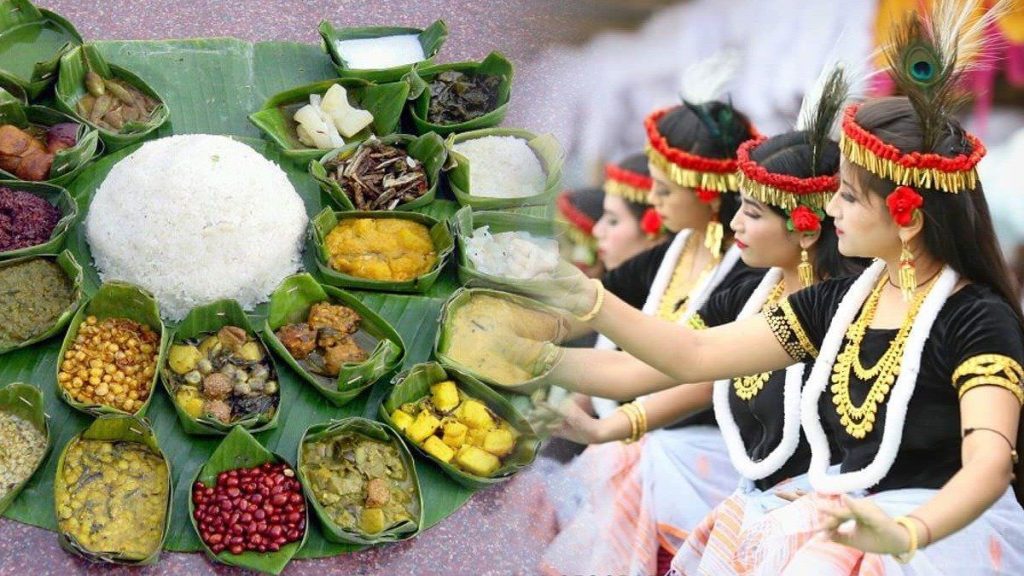
Chak-hao kheer: It is a rice pudding made from black rice, which is also known as chak-hao in Manipuri. The black rice gives the pudding a distinctive color and flavor.
Ngari: It is a fermented fish dish that is a staple in Manipuri cuisine. The fish is usually dried in the sun before being fermented and can be eaten with rice or other dishes.
Chamthong: It is a clear soup made from various vegetables like cabbage, pumpkin, beans, and herbs. It is usually served with rice.
Kangsoi: It is a vegetable stew made with bamboo shoots, potatoes, onions, and other vegetables. It is also served with rice.
Eromba: It is a spicy mashed vegetable dish made with boiled vegetables like potatoes, yams, and colocasia leaves. It is typically served as a side dish with rice or fish.
Paknam: It is a steamed cake made from rice flour, coconut, and jaggery. It is a popular dessert and is typically served with tea.
NavRoz
Indian Parsis celebrate Nowruz, which is the Persian New Year, and it is known as “Navroz” in India. The celebration of Navroz among Indian Parsis has its roots in the Zoroastrian tradition of ancient Persia, and it is celebrated as a cultural and social festival.

Nowruz is a Persian festival that marks the beginning of the new year and the start of spring. It is celebrated on the spring equinox, which usually falls on March 20th or 21st. Nowruz is a combination of two Persian words, “now” meaning new, and “ruz” meaning day. Thus, Nowruz means “new day.”
The origins of Nowruz can be traced back to ancient Persia and Zoroastrianism, which was the dominant religion of the region before the arrival of Islam.
The celebration of Navroz among Indian Parsis usually takes place in the month of March, and it is marked by a variety of customs and traditions. The celebrations usually begin a few days before the actual day of Navroz, and the preparations include cleaning and decorating the house, buying new clothes, and preparing special dishes.
One of the main traditions of Navroz celebrations among Indian Parsis is the setting up of a Sofreh Haft Sin, which is a traditional table setting consisting of seven items that begin with the Persian letter “sin”. The seven items in the Sofreh Haft Sin include
- Sabzeh (wheat or lentil sprouts),
- Samanu (sweet pudding made from sprouted wheat),
- Senjed (dried fruit of the oleaster tree),
- Seer (garlic),
- Seeb (apple),
- Somāq (sumac berries), and
- Serkeh (vinegar).
- In addition to these seven items, other items such as coins, candles, may also be included in the Sofreh Haft Sin.
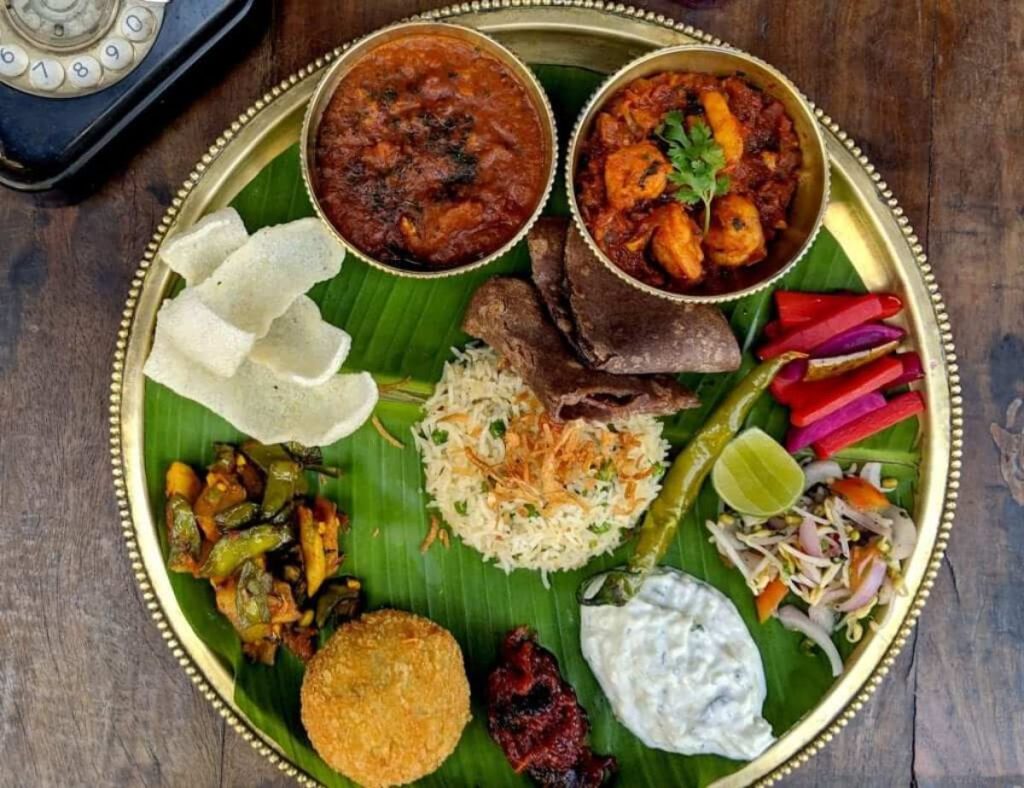
Apart from the Sofreh Haft Sin, other customs and traditions observed by Indian Parsis during Navroz celebrations include visiting friends and family, exchanging gifts, and enjoying traditional Parsi dishes such as Sali boti (a meat dish with potato straws), Dhansak (a lentil and meat stew), and Ravo (a sweet dish made with vermicelli and nuts).
Overall, Navroz celebrations among Indian Parsis are marked by joyous and festive gatherings with family and friends, and it is an important occasion for preserving and celebrating their cultural heritage.
What other similar new year Festivals are celebrated in nearby countries?
Interestingly some of the countries near India have their own unique new year celebrations that are deeply rooted in their cultural traditions.
Here are some examples:
Songkran: This is the new year festival of Thailand and is celebrated in mid-April.
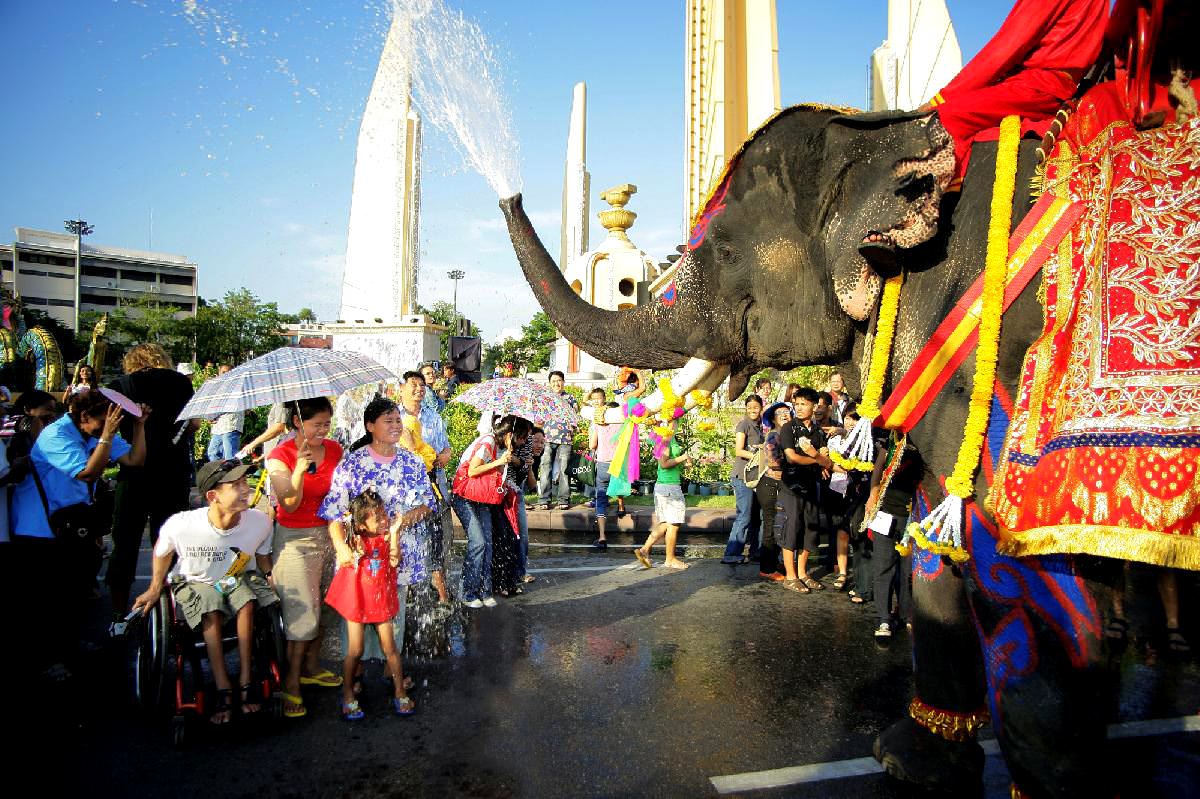
It is also known as the water festival, and people celebrate by splashing water on each other, visiting temples, and offering food to monks.
Thingyan: This is the new year festival of Myanmar and is celebrated in mid-April.

It is also known as the water festival, and people celebrate by splashing water on each other, visiting temples, and offering food to monks.
Chaul Chnam Thmey: This is the new year festival of Cambodia and is celebrated in mid-April.
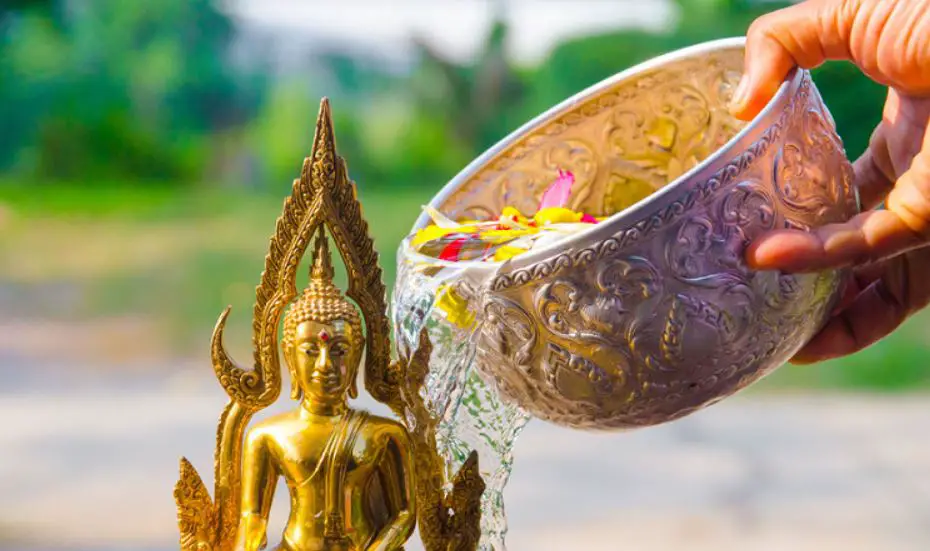
People clean their homes and decorate them with flowers, and visit temples to offer prayers and make offerings.
Pi Mai: This is the new year festival of Laos and is celebrated in mid-April.
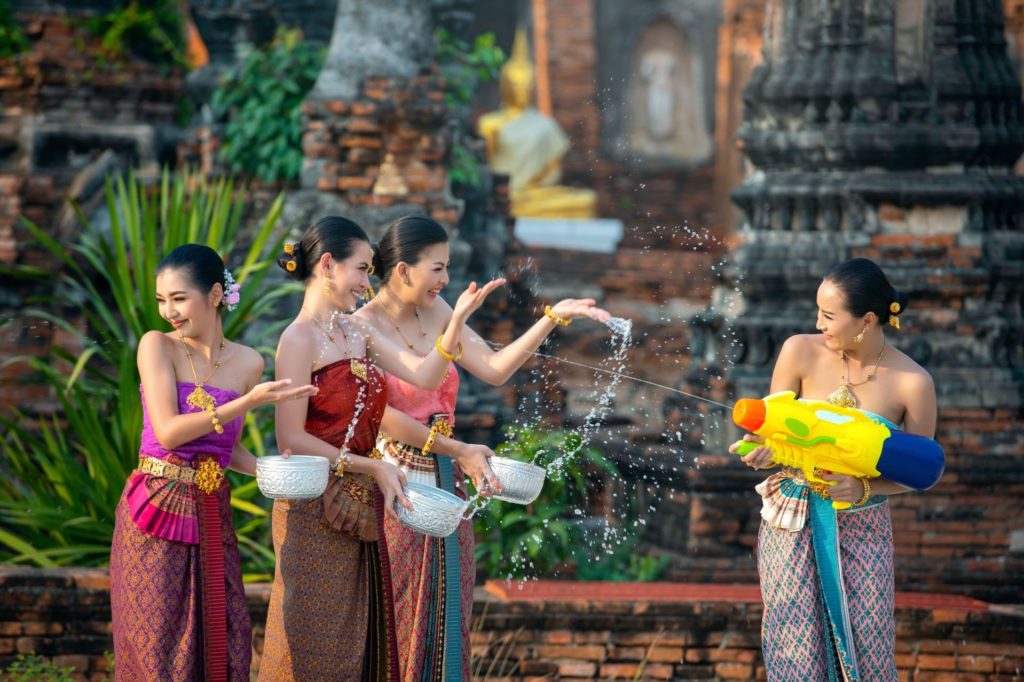
People engage in various customs and traditions, such as cleaning homes, wearing new clothes, preparing special dishes, offering prayers to deities, and exchanging gifts. They provide an opportunity for people to come together and celebrate their rich cultural heritage.



